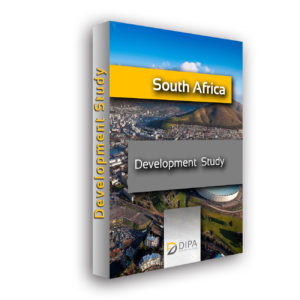1. The Country
1.1 Country’s History in Brief
1.2 Geographic data
1.3 People and Society
1.4 Government
1.5 Economy
3. South Africa export competitiveness
3.1 South Africa’s exports—five stylized facts
3.2 Three opportunities for unlocking South Africa’s export potential
3.3 Conclusion
4. ICT sector in South Africa
4.1 Introduction
4.2 Policy outcome 1: poor institutional arrangements
4.3 Policy outcome 2: ineffectual regulatory environment
4.4 Policy outcome 3: limited infrastructure extension and bottlenecks
4.5 Policy outcome 4: high wholesale pricing
4.6 Policy outcome 7: mobile broadband speeds faster than ADSL
4.7 Policy Outcome 8: spectrum allocation bottlenecks
4.8 Policy outcome 9: financial performance of mobile incumbent operators strong Telkom weak
4.9 Policy outcome 10: unaffordable access and suboptimal use
4.10 Conclusions and recommendations
5. The impact of fiscal policy in poverty and inequality
5.1 Introduction
5.2 General Government’s Fiscal Instruments to Tackle Poverty and Inequality
5.3 Basic Framework, Data and Assumptions
5.4 The Level and Progressivity of Selected Taxes and Social Spending Programs in South Africa
5.5 The Net Fiscal System and the Distribution of Income
5.6 Conclusions and Policy Implications
6. Health care in South Africa
6.1 Introduction
6.2 Expenditure
6.3 National, provincial and local
6.4 National Health Insurance
6.5 Facilities
6.6 Doctor shortages
6.7 Statutory bodies
6.8 Legislation
6.9 Health profile
7. Design and sustainability of renewable energy incentives
7.1 Sector Background
7.2 Renewable Energy Development
7.3 Renewable Energy Targets
7.4 Design of Incentive Schemes
7.5 The Birth and Death of REFITs in South Africa
7.6 The Birth of the REIPPP Program in South Africa
7.7 Qualification Criteria
7.8 Round One Outcomes
7.9 Second Round
7.10 Impact of Renewable Energy Tariffs on the Consumer
7.11 Conclusions
7.12 General Lessons
8. Energy Sector Jobs to 2030: How the Energy [R]evolution will create sustainable green jobs
8.1 Introduction
8.2 Energy [R]evolution scenarios
8.3 Methodology
8.4 Employment in the electricity sector – Results
8.5 Sensitivity analysis
8.6 Conclusion
9. Water Supply and Sanitation
9.1 Introduction
9.2 Sector Overview: Coverage and Finance Trends
9.3 Reform Context: Introducing the CSO2 Scorecard
9.4 Institutional Framework
9.5 Financing and its Implementation
9.6 Sector Monitoring and Evaluation
9.7 Subsector: Rural Water Supply
9.8 Subsector: Urban Water Supply
9.9 Subsector: Rural Sanitation and Hygiene
9.10 Subsector: Urban Sanitation and Hygiene
10. Developing a food security map for South Africa
10.1 Introduction
10.2 Literature Review
10.3 A review of food security studies in South Africa
10.4 Modeling strategy
10.5 Summary of results
10.6 Summary and conclusion
11. Financing Small and Medium Enterprises
11.1 Introduction
11.2 Insights from Existing Studies and Data Sources
11.3 Survey Results
11.4 Policy Considerations
11.5 Conclusions
12. Appendices
12.1 Doing Business in South Africa (by World Bank)
12.2 South Africa health profile (by World Health Organization)

